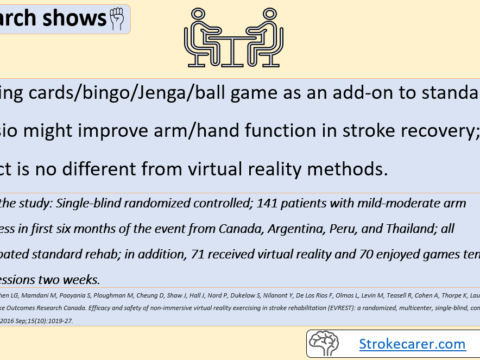
Standard guidelines recommend aerobic exercises after stroke. It is to strengthen heart muscles. Our heart muscles should be strong enough to transport oxygen and food to other muscles to move and walk.
However, before engaging in those exercises, stroke survivors need to consult their physician.
Researchers say that cardio with strength training exercises gives you better walking ability, walking speed, and body balance (to a certain extent).
And, they also say that muscle-strengthening exercises alone do not improve walking ability.
The emphasis on cardio is a recent finding; traditionally, the rehab programs have been focused on gait training and balance.
This emphasis on cardio is because many who survive the stroke live with low levels of heart fitness; and, it could also be that those with low heart fitness are more likely to face a stroke.
What are cardio exercises?
- Walking
- Cycling
Walking and cycling are the two most common cardio exercises.
The cardio strengthens the heart. That is why it is called cardio.
Always blend cardio with muscle strengthening exercises
However, before engaging in cardio, the physician should assess the heart fitness and the physiotherapist should recommend the types of cardio that need to be followed. The Heart and Stroke Foundation has published an excellent patient guide. You can access this brochure through this link. This tool gives you sample aerobic programs. However, you need professional help from a qualified health professional – physiotherapist after a physician assessment.
What are muscle fitness exercises?
- Pushing
- Pulling with elastic bands
- Lifting weights
In these exercises, we do not exert pressure on the heart as much as in walking and cycling.
Range of motions and body balance exercises
Invariably, when we engage in the above two types of exercises, we certainly involve our joints with different types of range of motions and exercises that improve body balance.
About the research
In 2015, David Saunders and his team reviewed 58 clinical trials that compared people with a stroke and who engaged in special exercise sessions with a similar group of people who followed usual care. The total number of study participants involved in all these trials was 2797.
In this study, they classified physical fitness into three groups: heart fitness (endurance) training, muscle fitness (strength) training, and mixed training (a combination of the above two forms).
You can access the article through this link; https://www.ncbi.nlm.nih.gov/pmc/articles/PMC6464717/
Do you have any comments, ideas, or suggestions about how to blend cardio with strength exercises? Please initiate a discussion about it.
A guideline resource for exercise providers
The Ontario Stroke Network provides a useful guideline for community-based exercise providers; here is the link.
Read also…
- How to regain movements after a stroke – general rules to follow
- Best practices to regain walking after a stroke
- How to recover arm and hand movements after a stroke
- Brain’s stroke recovery journey
- Aerobic exercises could improve recovery after stroke


